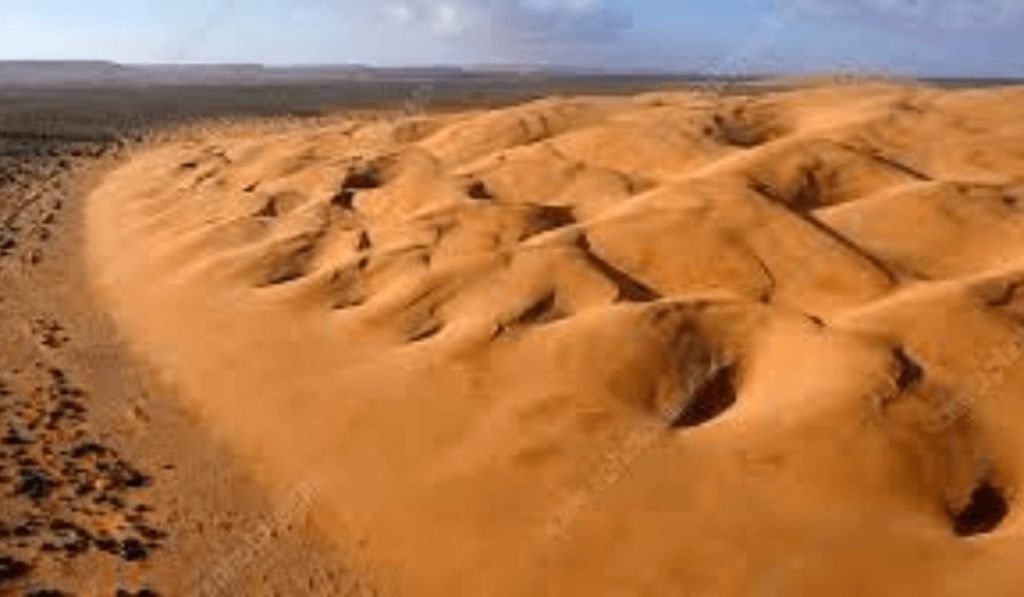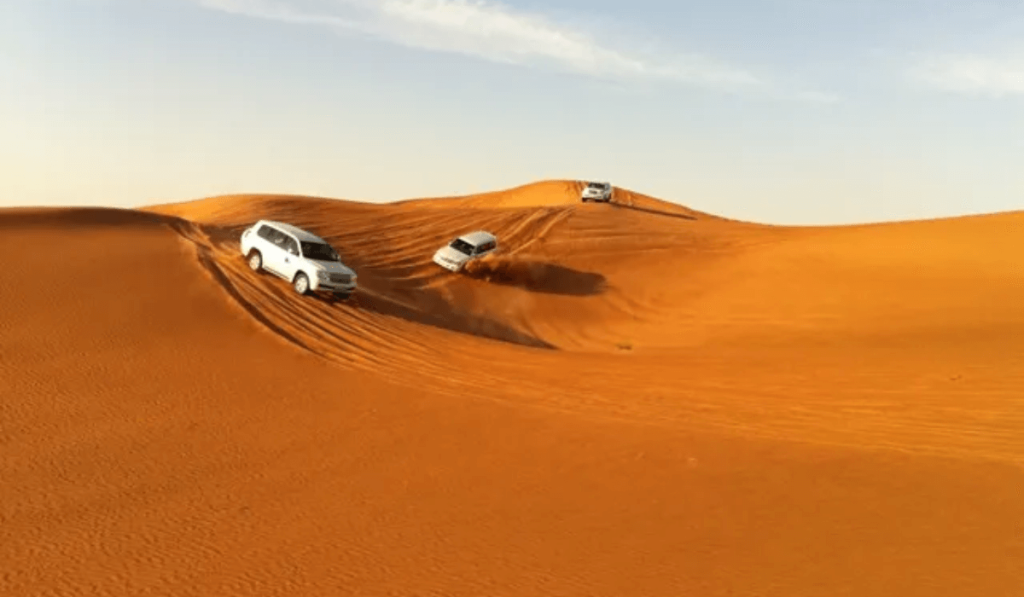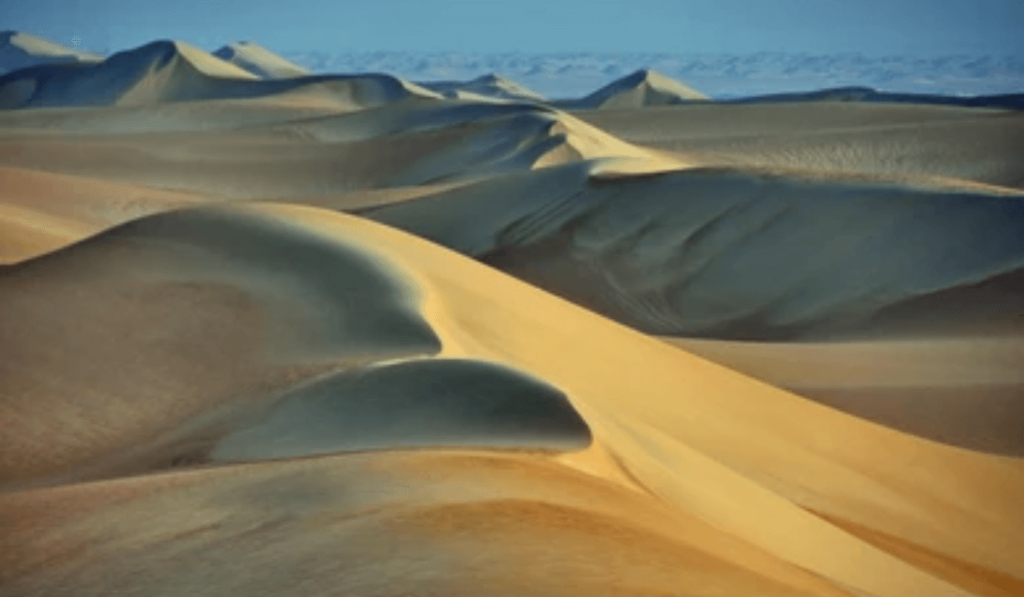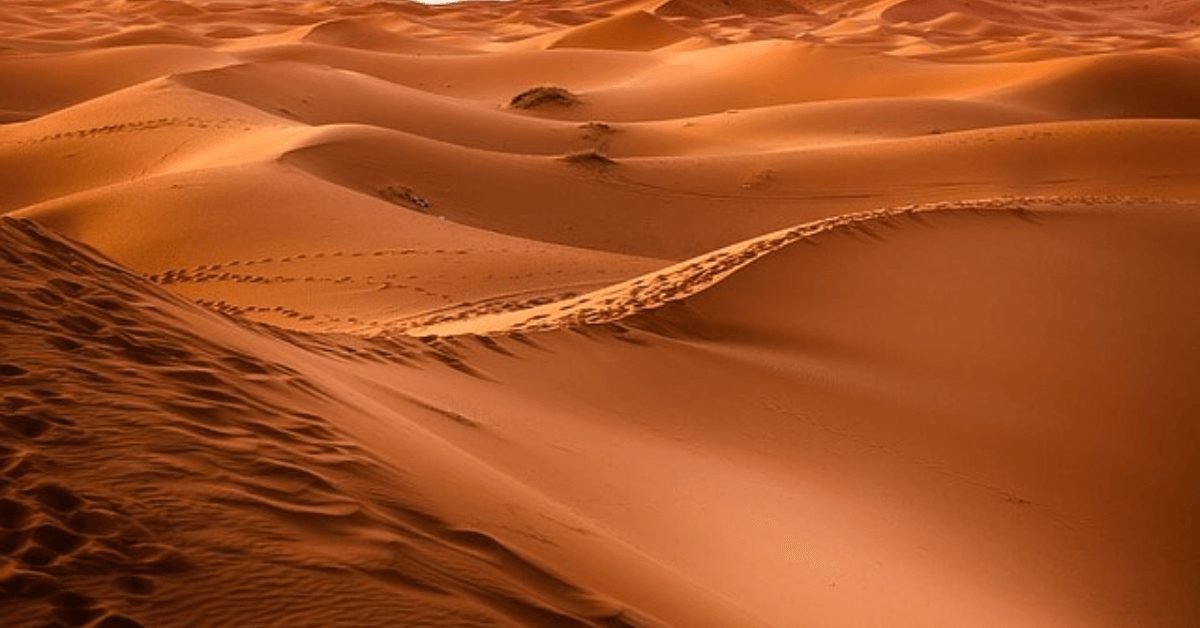Sand dunes are not mere piles of sand found in deserts; they are fascinating natural formations that arise from intricate scientific processes. Understanding the science behind sand dune formation can enhance our appreciation for these mesmerizing landscapes and provide valuable insights for those embarking on desert safaris. In this article, we will delve deeper into the topic, exploring the various factors influencing sand dune formation, the different types of dunes, their morphology, and the crucial role of wind in shaping them.
Deserts, with their barren expanses and extreme conditions, often evoke a sense of awe and curiosity. Within these vast landscapes, sand dunes stand as remarkable features, capturing the imagination of explorers and offering a unique experience for desert safari goers. But what exactly are sand dunes, and how do they form? Let’s embark on a journey to uncover the science behind these captivating natural wonders.
What are sand dunes?
Sand dunes can be described as hills or mounds of sand that form through a combination of wind, sand availability, and various environmental factors. The composition of sand dunes primarily consists of loose sand particles, ranging in size from fine grains to coarser granules. These particles accumulate and shape the dunes over time, creating breathtaking landscapes that mesmerize with their undulating forms.
Factors influencing sand dune formation
The formation of sand dunes is influenced by several key factors. Understanding these factors helps us comprehend the complexity of dune formation and appreciate the intricate dance between wind, sand, and the environment. Let’s explore some of the significant influences:
Wind patterns and velocity
The wind plays a pivotal role in shaping sand dunes. The patterns and velocity of wind in a desert region determine the direction and strength of the sand movement. Consistent winds blowing predominantly from one direction create a unidirectional force that shapes linear dunes. In contrast, variable wind patterns can lead to the formation of more complex and multidirectional dune formations.
Availability of sand particles
The availability of sand particles in the vicinity is crucial for dune formation. Sand can be sourced from various locations, including riverbeds, eroded rocks, or other dunes. Factors such as proximity to these sources, erosion patterns, and geological features influence the supply of sand for dune formation.
Topography of the area
The topography of the desert landscape plays a significant role in the accumulation and stabilization of sand. Depressions and low-lying areas tend to collect sand, creating favorable conditions for dune formation. Additionally, the presence of obstacles like vegetation or rocks can affect the movement and deposition of sand, resulting in unique dune shapes and patterns.
Vegetation and moisture content
Vegetation and moisture content in the desert environment can impact dune formation. Plant life, particularly hardy desert vegetation, plays a role in stabilizing sand and preventing erosion. The presence of vegetation can also influence wind patterns, creating areas of higher sand accumulation. Moisture content, although typically low in deserts, can affect the cohesion of sand particles and contribute to the formation and maintenance of dunes.
Formation of sand dunes
Sand dune formation can be described as a multi-step process involving sand transportation, accumulation, and dune growth and migration. Let’s explore each step in detail:
Step 1: Sand transportation
The process of sand transportation begins with the force of the wind. As the wind blows over the desert surface, it picks up loose sand particles through a phenomenon known as saltation. In saltation, sand grains are lifted from the surface and propelled forward, only to fall back due to gravity. This continuous cycle of bouncing and colliding leads to the gradual movement of sand.
Step 2: Sand accumulation
When the wind velocity decreases or encounters an obstacle, the sand particles begin to settle and accumulate. This process occurs primarily in areas where wind speed diminishes, such as the lee side of dunes or in depressions. As sand accumulates, it forms the initial shape of a dune.
Step 3: Dune growth and migration
Once the initial dune shape is established, it can continue to grow and migrate over time. As the wind blows over the dune, it carries more sand particles, gradually adding to its size and altering its shape. The dune migrates in the direction of the prevailing wind, as the process of sand accumulation and erosion continues. This dynamic process of growth and migration contributes to the evolving landscapes of deserts.
Types of sand dunes
Sand dunes exhibit a remarkable diversity in shape and structure, influenced by factors such as wind patterns, sand availability, and topography. Let’s explore some of the common types of sand dunes:
Barchan dunes

Barchan dunes are characterized by their crescent shape with horns pointing downwind. These dunes often occur in areas with unidirectional winds. The gentle slope on the windward side allows sand to accumulate, while the steeper slip face on the leeward side prevents further sand deposition.
Transverse dunes

Transverse dunes form perpendicular to the wind direction and are characterized by linear ridges that extend across the desert landscape. These dunes often occur in areas with consistent and strong winds. The sand is deposited in the form of crests and troughs, creating a distinctive “wave-like” pattern.
Longitudinal dunes

Longitudinal dunes, also known as seif dunes, run parallel to the prevailing wind direction. These elongated dunes can stretch for miles and are shaped by winds that alternate direction over time. They have gentle slopes on both sides and are often found in areas with bidirectional or multidirectional winds.
Star dunes
Star dunes are complex dune formations characterized by multiple arms extending in different directions. These dunes typically occur in areas with variable wind directions and shifting wind patterns. The arms of the star dunes are shaped by the interplay of different wind regimes, resulting in a unique and captivating formation.
Understanding dune morphology
The morphology of sand dunes encompasses their various physical features and characteristics. Let’s explore some key aspects of dune morphology:
Crests, slopes, and slip faces
The crest of a dune refers to the highest point along its length. It is the ridge that separates the windward side from the leeward side. The slopes of a dune descend on either side of the crest, and their inclination depends on factors such as wind strength and sand cohesion. The downwind side of a dune is known as the slip face, which is typically steeper than the windward side. The slip face is constantly shaped by wind erosion and acts as a crucial component of dune dynamics.
Dune asymmetry and orientation
Sand dunes often exhibit asymmetry, with the windward slope being more gentle compared to the steeper slip face. This asymmetry is influenced by the direction and strength of the prevailing winds. The orientation of dunes also varies, with their alignment determined by the primary wind direction in the region.
The role of wind in shaping dunes
The wind is the primary agent responsible for shaping sand dunes. It acts as both a creative and destructive force, shaping the intricate patterns and forms we observe. Let’s explore the role of wind in more detail:
Wind erosion and deposition processes
The process of wind erosion occurs when the force of the wind dislodges loose sand particles from the surface. As the wind blows, it picks up the particles and carries them along. These particles can collide with each other or with other surfaces, leading to the gradual breakdown of sand grains. Wind erosion is a significant factor in shaping dunes and contributing to the movement of sand.
Deposition is the process by which sand particles settle and accumulate. When wind velocity decreases or encounters an obstacle, it no longer has sufficient energy to keep the sand particles in motion. As a result, the sand particles settle, forming layers and contributing to the growth and stability of dunes.
Saltation, suspension, and surface creep
Sand transportation occurs through various mechanisms. Saltation is the primary mode of transport for sand grains in dune formations. It involves the hopping and bouncing of sand grains along the surface. As the wind blows, it lifts the sand particles and propels them forward. When these particles strike the ground, they displace other grains, causing a continuous cycle of saltation.
Suspension refers to the transportation of finer sand particles that are light enough to be carried in the air. These particles remain airborne for more extended periods, contributing to the overall movement and distribution of sand in the desert environment.
Surface creep is another mode of sand transportation, involving the rolling or sliding of sand grains along the surface. This process occurs when sand grains are too large or heavy for saltation or suspension but still have enough momentum to move by being pushed or dragged by wind currents.
Significance of sand dunes in desert ecosystems
Sand dunes play a vital role in desert ecosystems, serving as unique habitats for specialized flora and fauna. Let’s explore some of the key ecological significance of sand dunes:
Habitat for specialized flora and fauna
Sand dunes provide a distinct ecosystem that is home to various plants and animals uniquely adapted to survive in harsh desert conditions. Many species have evolved specialized mechanisms to thrive in the shifting sands, including deep-reaching roots, water storage capabilities, and protective adaptations against extreme temperatures.
Protection against wind erosion
One of the crucial ecological functions of sand dunes is their role in preventing wind erosion. Dunes act as natural barriers, shielding the surrounding areas from the erosive force of strong winds. They help to stabilize the desert surface, preventing the loss of valuable topsoil and preserving delicate ecosystems.
Importance of groundwater recharge
Sand dunes also play a significant role in groundwater recharge. When rain or occasional flash floods occur in deserts, the sand dunes act as natural filters, allowing water to percolate into the ground. This process replenishes underground aquifers and contributes to the sustainability of desert ecosystems.
Desert safaris and sand dune exploration
Desert safaris have become increasingly popular as an adventure activity, offering visitors the opportunity to explore and experience the beauty of sand dunes up close. Let’s take a closer look at desert safaris and the considerations for sand dune exploration:
Popular destinations for desert safaris
Desert safaris are conducted in various locations worldwide, each offering its unique experiences and landscapes. The Sahara Desert, with its vast expanse of sand, is a popular destination for desert safaris. The Arabian deserts, such as the Dubai Desert or the Empty Quarter, also attract a significant number of visitors. Other notable desert safari destinations include the deserts of Australia, such as the Simpson Desert, and the deserts of North America, such as the Mojave Desert.
Adventure activities and experiences
Desert safaris provide a range of thrilling adventure activities that allow visitors to immerse themselves in the desert environment. Some popular activities include:
- Dune bashing: An exhilarating experience that involves driving through the dunes in 4×4 vehicles.
- Sandboarding: Similar to snowboarding, but on sand dunes. Visitors can slide down the dunes on specially designed boards.
- Camel rides: A traditional way to explore the desert, camel rides offer a unique perspective and a sense of connection to the desert’s heritage.
- Star gazing: Desert skies are renowned for their clear views of stars and celestial bodies. Stargazing during the night can be a mesmerizing experience.
Environmental considerations and responsible tourism
While desert safaris offer exciting experiences, it is crucial to consider the environmental impact and practice responsible tourism. Here are some key considerations:
- Choose responsible tour operators: Opt for tour operators who prioritize sustainability and conservation. They should adhere to guidelines and regulations that minimize the impact on the desert environment.
- Stay on designated paths: Stick to designated routes and paths to minimize disturbance to flora and fauna. This ensures the preservation of delicate ecosystems and prevents further erosion or damage to the dunes.
- Minimize waste and litter: Respect the desert environment by disposing of waste properly and minimizing litter. Carry reusable water bottles and avoid single-use plastics.
- Respect local culture and traditions: Be mindful of local customs and traditions when interacting with local communities. Engage in cultural experiences that promote understanding and respect for the desert’s heritage.
Conclusion
Sand dunes, with their enchanting shapes and patterns, are not mere heaps of sand but rather the result of complex scientific processes. By understanding the factors influencing sand dune formation, the different types of dunes, their morphology, and the role of wind, we gain a deeper appreciation for the wonders of nature. Whether embarking on a desert safari adventure or simply marveling at the beauty of sand dunes from afar, these natural formations provide a captivating lesson in the intricacies of the desert environment.

